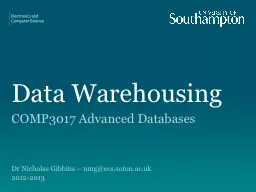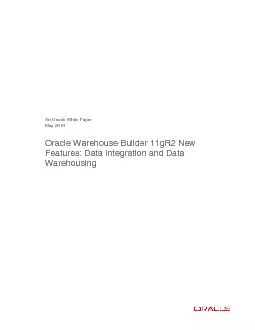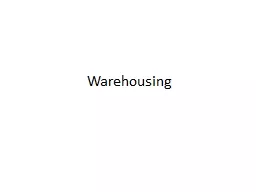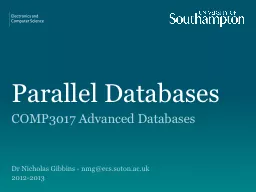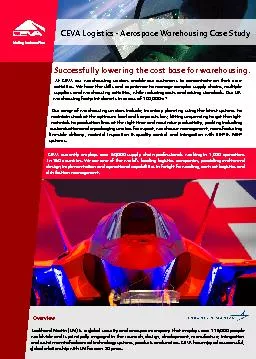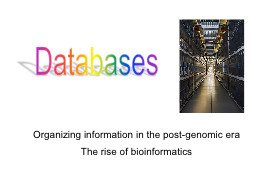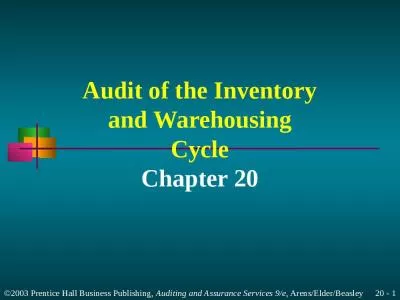PPT-Data Warehousing COMP3017 Advanced Databases
Author : yoshiko-marsland | Published Date : 2018-03-10
Dr Nicholas Gibbins nmgecssotonacuk 20122013 Processing Styles OLTP 2 OnLine Transaction Processing Traditional workloads bread and butter processing Volumes
Presentation Embed Code
Download Presentation
Download Presentation The PPT/PDF document "Data Warehousing COMP3017 Advanced Datab..." is the property of its rightful owner. Permission is granted to download and print the materials on this website for personal, non-commercial use only, and to display it on your personal computer provided you do not modify the materials and that you retain all copyright notices contained in the materials. By downloading content from our website, you accept the terms of this agreement.
Data Warehousing COMP3017 Advanced Databases: Transcript
Download Rules Of Document
"Data Warehousing COMP3017 Advanced Databases"The content belongs to its owner. You may download and print it for personal use, without modification, and keep all copyright notices. By downloading, you agree to these terms.
Related Documents

